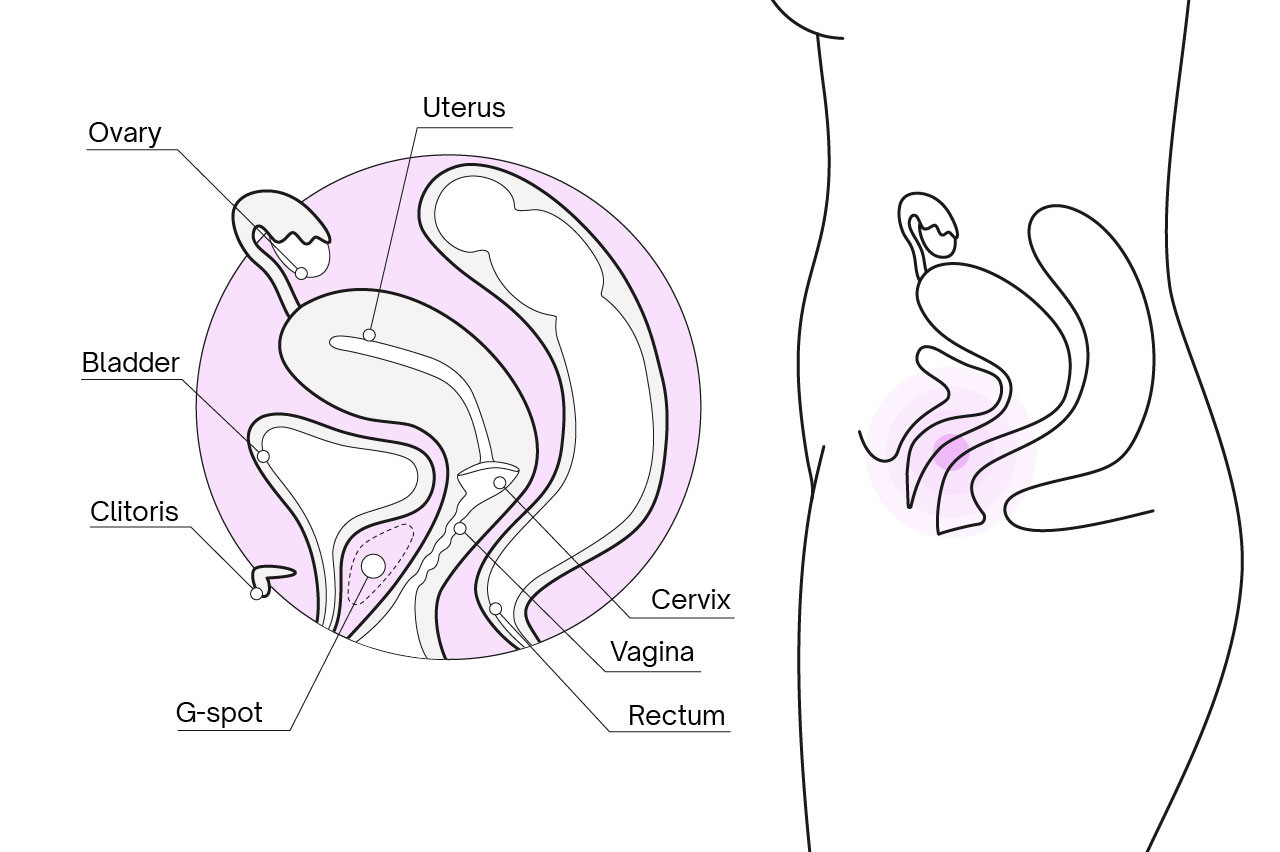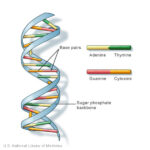The G-spot, a term frequently whispered in bedrooms and discussed in hushed tones, is known as an area within the vagina believed to be a key to intense sexual arousal and orgasm for many women. Located on the anterior vaginal wall [1], stimulation of this zone can trigger a cascade of pleasurable sensations. While the concept of a specific female pleasure spot dates back to the 1950s with the work of German gynecologist Dr. Ernst Gräfenberg, who first scientifically identified it, the “Gräfenberg spot,” or G-spot as it’s now commonly known, remains a topic of both fascination and some controversy. It’s famous for the potential for powerful G-spot orgasms and the phenomenon of squirting, yet its exact nature and even its existence as a distinct anatomical structure are still debated within the scientific community.
The scientific exploration of the G-spot has been extensive, utilizing medical imaging, anatomical studies, cadaver dissections, and surveys of personal experiences. However, research findings have often been conflicting [4]. Proponents of the G-spot’s existence often describe it as a sac of erectile-like tissue situated on the anterior vaginal wall [2]. Conversely, a more recent study could not find anatomical evidence of such a discrete structure [3], while another study identified a G-spot-like area in approximately half of the bodies examined [4].
A comprehensive 2021 review of G-spot research suggests that the G-spot might not be a separate, isolated pleasure point. Instead, it could be an area closely associated with the internal structures of the clitoris, if it exists as a distinct entity at all [5]. Despite ongoing scientific discussions about the precise location, size, function, and even the fundamental existence of the G-spot [5], the undeniable truth remains: vulvas and vaginas are rich in sensitive erogenous zones capable of providing immense pleasure when stimulated.
Pinpointing the G-Spot: Where to Find It
So, where is the female G-spot actually located? Generally, the G-spot is understood to be situated approximately 2-3 inches, or 5-8 centimeters, inside the vagina, specifically on the anterior (front) wall [5]. However, it’s crucial to remember that individual anatomy varies, meaning the precise location can differ from person to person.
 Diagram showing where the G-spot is in relation to other reproductive parts
Diagram showing where the G-spot is in relation to other reproductive parts
Alt text: Anatomical illustration pinpointing the G-spot on the anterior vaginal wall, approximately 2-3 inches inside the vagina, in relation to the bladder, urethra, clitoris, and other female reproductive organs.
It’s also important to acknowledge that not everyone experiences pleasure from G-spot stimulation. If you find that stimulating this area yields little to no sensation, or if you haven’t experienced a G-spot orgasm, it is perfectly normal. Erogenous zones and the pathways to pleasure are highly individual and diverse!
How to Stimulate the G-Spot: Techniques for Enhanced Pleasure
Interested in exploring this potential pleasure zone and discovering what sensations it holds for you? Whether you’re exploring solo or with a partner, here are some valuable tips to enhance your experience when stimulating the G-spot:
Initiate with Foreplay
Prioritizing foreplay is essential for maximizing pleasure during G-spot stimulation. Before any form of penetration, dedicate time to building arousal. Whether you are alone or with a partner, engage in activities that heighten sexual excitement. This could include caressing the breasts and nipples, if desired, stimulating the clitoris and vulva, and exploring other erogenous zones on the body.
Incorporate Lubrication
For penetrative activities, using lubricant is highly recommended, even if natural lubrication is ample. Lube reduces friction, enhances glide, and amplifies sensations, making the experience significantly more pleasurable.
Water-based lubricants are often considered excellent choices. They are easy to clean up, non-staining, and generally gentle on sensitive skin, minimizing irritation. To use, apply a generous amount to fingers, sex toys, or the penis before penetration. Reapply as needed to maintain comfortable and pleasurable glide.
Experiment with Stimulation Techniques
As mentioned, the G-spot is located a few inches inside the vagina on the anterior wall. Insert one or two fingers into the vagina and use a “come hither” motion, curving your fingers upwards towards the belly button, to explore the sensations when this area is touched. Patience and experimentation are key. It may take some exploration to discover the most pleasurable type of stimulation for you.
Vary the speed of stimulation – try slower, more deliberate strokes, faster rhythms, or alternating between the two. Circular motions around the area or side-to-side movements might also feel more pleasurable than the “come hither” motion. Embrace experimentation and enjoy the process of discovery!
Vary Pressure
Pressure can be a crucial element in unlocking G-spot pleasure. Begin with light pressure as you stimulate the area, and gradually increase it as sensations develop. Pay attention to how different levels of pressure feel and adjust accordingly to find what feels most pleasurable.
Maintain Consistency
For many individuals, achieving orgasm relies on consistent erogenous stimulation. Once you find a rhythm, pressure, and technique that feels good, maintain it until orgasm is reached. This consistency can be easier to achieve during solo exploration. With a partner, clear communication about what feels best is essential. Encourage your partner to maintain the stimulating action that is most pleasurable rather than changing techniques too frequently.
Optimal Sex Positions for G-Spot Stimulation
Certain sex positions are more conducive to direct G-spot stimulation than others. The most effective positions generally offer:
- Control over Hip Movement: Allowing for adjustments in angle and pressure.
- Clitoral Access: Enabling simultaneous clitoral stimulation for enhanced pleasure.
- Anterior Vaginal Wall Focus: Positioning to maximize stimulation of the front vaginal wall.
Here are four positions that incorporate these elements and are worth exploring:
1. Spooning
Spooning is a highly effective position for G-spot stimulation due to its angle. In this position, the penetrating partner naturally contacts the anterior vaginal wall repeatedly, directly targeting the G-spot area. The receiving partner retains hip mobility to further adjust stimulation. Furthermore, both partners have easy access to the clitoris for added pleasure.
To assume the spooning position, both partners lie on their sides, facing the same direction, as if cuddling. The penetrating partner positions themselves behind the receiving partner and enters from behind.
2. Speed Bump
The Speed Bump position provides an excellent angle of penetration for consistent anterior wall contact, directly stimulating the G-spot. It also allows for easy clitoral access for supplementary stimulation. Elevating the hips of the receiving partner with a pillow can deepen the penetration angle if desired.
To get into the Speed Bump position, the receiving partner lies on their stomach. The penetrating partner positions themselves on top and enters from behind. The receiving partner can choose to keep their legs together or slightly apart. Both partners can use a hand to stimulate the clitoris of the receiving partner for increased pleasure.
3. Doggy Style
Doggy style is a versatile position offering excellent G-spot stimulation potential. It provides both partners with substantial control over depth and angle of penetration and comes in numerous variations. Clitoral access is also readily available to enhance pleasure for the receiving partner.
To assume doggy style, the receiving partner positions themselves on their hands and knees. The penetrating partner kneels or stands behind and enters. Arching the back in this position can increase anterior wall stimulation. Alternatively, resting on forearms instead of hands can deepen the angle of penetration. Experimenting with variations is recommended to discover what works best.
4. Cowgirl
The Cowgirl position places the receiving partner (or top partner) in control of movement, depth, and speed of penetration. For optimal G-spot stimulation in this position, the top partner should focus on back-and-forth movements rather than solely up-and-down motions.
To get into the Cowgirl position, the penetrating partner lies on their back. The receiving partner straddles their hips, facing them. The bottom partner can remain passive, allowing the top partner to control the movement, or they can actively thrust their hips upwards. Clitoral stimulation is easily accessible for both partners in this position, offering potential for heightened pleasure.
Are G-Spot Orgasms More Intense?
Due to the ongoing scientific debate regarding the G-spot’s exact nature and even its discrete existence, definitively stating whether G-spot orgasms are more powerful than clitoral orgasms is challenging. Some individuals report that vaginal orgasms, potentially linked to G-spot stimulation, feel distinct – they may be described as longer-lasting, more intense, deeper, and providing a more whole-body experience [6]. However, if the G-spot is indeed an internal extension of the clitoris, as some researchers propose, then orgasms experienced through its stimulation would technically be clitoral in origin, rather than strictly vaginal. Ultimately, as long as pleasure is achieved, the relative “power” of different types of orgasms is subjective and less important than personal enjoyment. Prioritize what feels good and fulfilling to you.
Can G-Spot Stimulation Trigger Squirting?
Squirting refers to the release of a clear fluid from the urethra during sexual activity [7]. It may or may not occur concurrently with orgasm, and it is not universally experienced – a US study indicated that approximately 40% of women reported having ever squirted [8].
While G-spot stimulation is commonly linked to squirting, the relationship is not straightforward. The same US survey revealed that various techniques were associated with squirting, including pressure on the anterior vaginal wall and clitoral stimulation alone [8]. This suggests that while G-spot stimulation may contribute to squirting for some, it is not the sole or necessary trigger, and other forms of stimulation can also be effective.
Enhance Body Awareness with Natural Cycles
Promoting awareness of female health is central to the mission of Natural Cycles. Our FDA-cleared app is designed to help you plan or prevent pregnancy while simultaneously empowering you to learn more about your body and your pleasure. Explore Natural Cycles to discover if it’s the right tool for you!

